





| Flat-backed Millipede (Polydesmus angustus (Latzel, 1884)) |






|
|
Scientific name: Polydesmus angustus (Latzel, 1884) Common name: Flat-backed Millipede Other names: Keeled Millipede French name: Phylum: Arthropoda Subphylum: Myriapoda Class: Diplopoda Subclass: Helminthomorpha Order: Polydesmida Family: Polydesmidae Size: Length: 14 to 25 mm; Width: about 4mm. Habitat: Compost heaps, under tree bark, in crevices of old stumps and in the soil with many dead leaves and rotting plants. Food: Roots, dead leaves and rotting plants. They can also feed on fruits like strawberries as an example. Reproduction: Mating occurs from late spring to mid autumn. Females lay several batches of eggs. Polydesmus which are hatching out early in the year become adult in one year, those which hatch out later become adult in two years. Geographic area: North western Europe, introduced to North America to the south-east of the Unites States and to the Atlantic coast of Canada. |
The millipedes of the Diplopoda class generally measure more than 10 mm and show one first segment without legs just at the back of the head, one pair of legs on segments 2, 3 and 4, and then two pairs of legs per segment on the following ones. The millipedes of the Polydesmida order show 19 or 20 segments. The fore pair of legs on the seventh segment is replaced by gonopods (small organs located under the body and used for mating) on males. The hind part of each segment shows lateral extensions or keels also called paranota (one paranotum). The Polydesmida order includes 7 families in France. I have read that large size specimens, with a colourful flat body and with simple keels belong all to the Polydesmidae family. There are 26 species in this family in France. Polydesmus angustus, which is rather common, is the only species exceeding 20 mm in length in the northern half of the country. I have also read that Polydesmus angustus is characterized by rather wide paranota which clearly show upcurved tips. However I do no know anything about this criteria for the other species you can observe in France. |
| [To know more about the Flat-backed Millipede] [Next picture] [Top] |

|
This millipede shows all the characteristics of the Polydesmidae family. It seems to me that there is only one pair of legs on the seventh segment, this may indicates one male if I'm not mistaken. The length of about 20 mm and the location make me think that this is Polydesmus angustus. |
| [To know more about the Flat-backed Millipede] [Next picture] [Previous picture] [Top] |
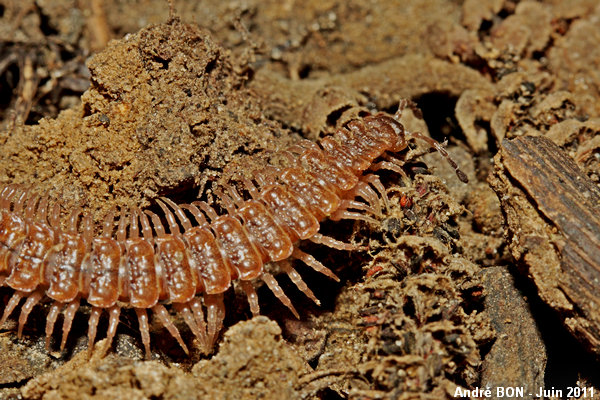
|
Here is a closer view allowing to confirm only one pair of legs on the seventh segment. Next time I will try to get an underside view. |
| [To know more about the Flat-backed Millipede] [Next picture] [Previous picture] [Top] |
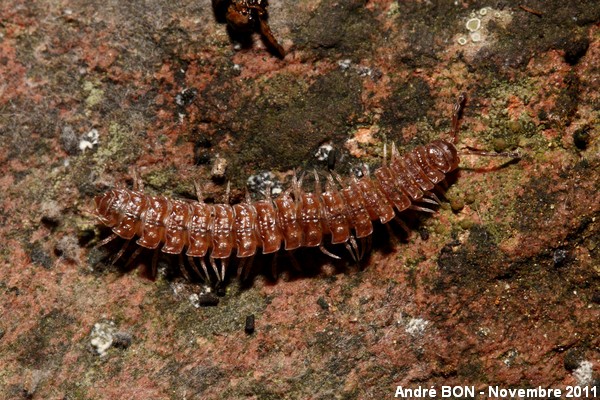
|
This times you can see one pair of legs under the seventh segment. This indicates one female. |
| [To know more about the Flat-backed Millipede] [Next picture] [Previous picture] [Top] |
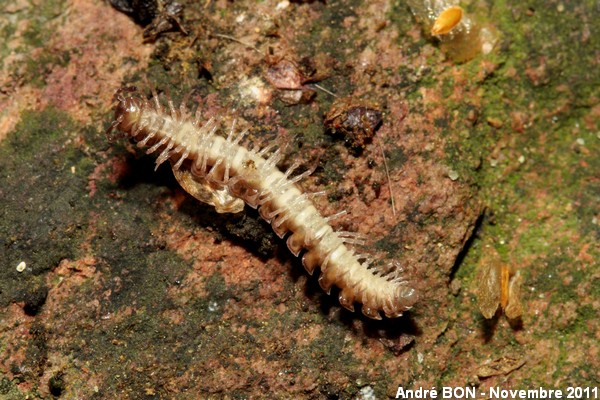
|
The pair of legs under the seventh segment is confirmed by this under side view. I still had not the reflex to measure the exact body length while this is an important criteria to confirm the species. |
| [To know more about the Flat-backed Millipede] [Next picture] [Previous picture] [Top] |
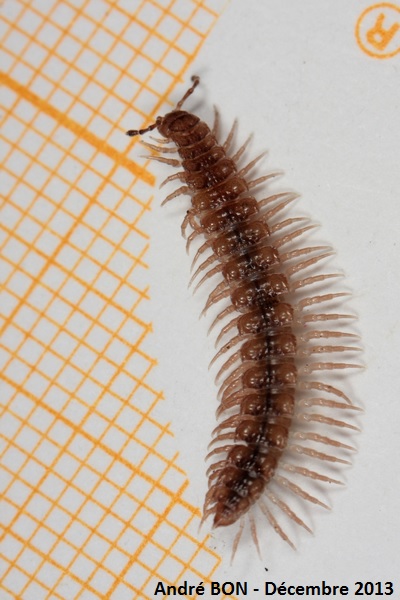
|
This times I have measured the body length: 18.5 mm. The paranota with upcurved edges till the first segments are a good indication for the Polydesmus angustus species but I will only list this one as Polydesmidae as the body length is shorter than 20 mm. |
| [To know more about the Flat-backed Millipede] [Previous picture] [Top] |
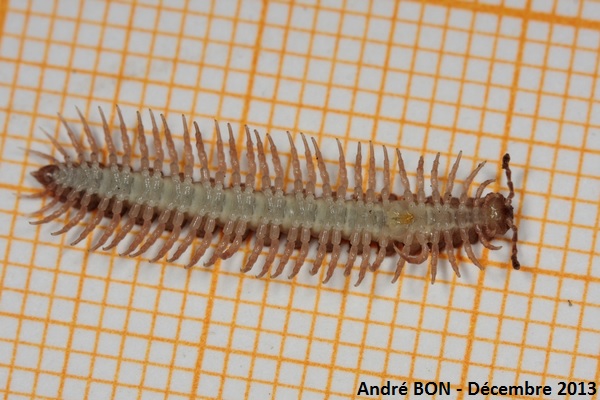
|
The seventh segment only bears one pair of legs, so this one is a male. |